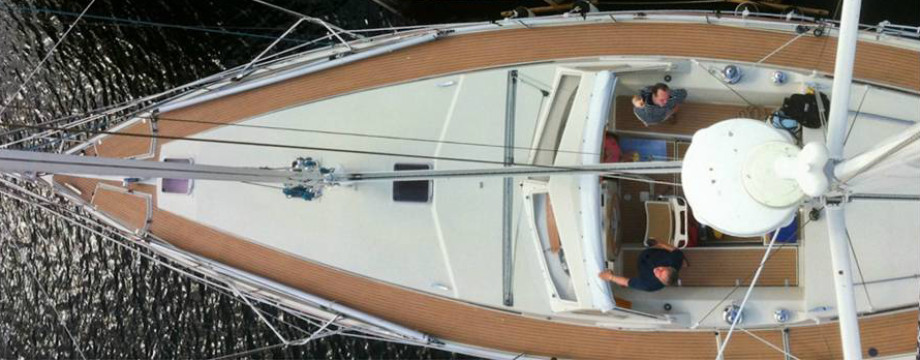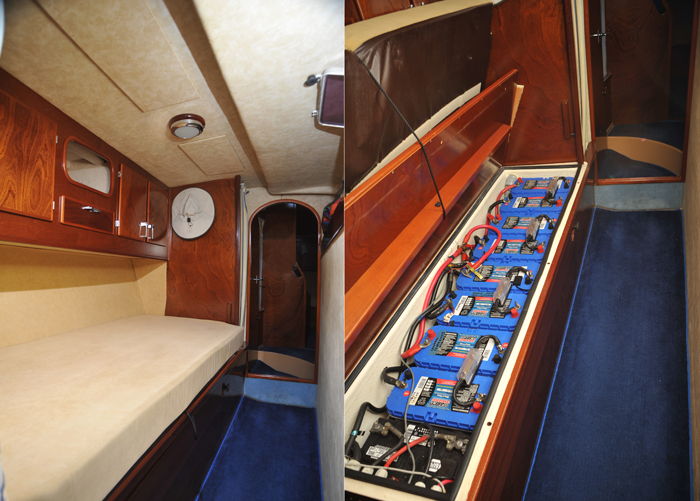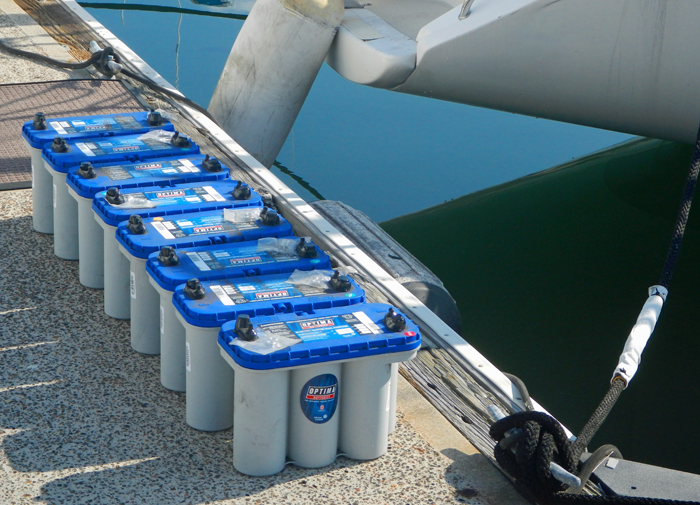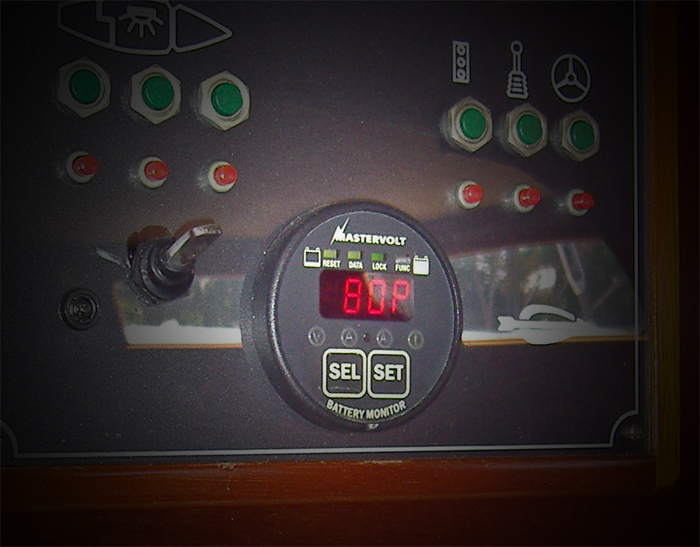When away from the dock, our on-board systems are powered by a series of batteries. The systems include are our refrigeration/freezers, fresh water pressure pump, lighting, bilge pumps, navigation equipment, auto pilot, lights, fans and so forth. Cindy and I tend to be little energy hogs. At any given time, we will have a couple of computers running, music playing and ice cream in the freezer. Electricity is a premium luxury on a boat. It is amazing how we took power usage at our home for granted and how quickly reluctantly we have adapted to limited power on the boat. Offshore or at anchor, we normally run the diesel generator and 80 amp battery charger in the morning and again around lunchtime for about 90 minutes. In the evening, we charge the system for about two hours. The two hour charge will fully top off the batteries and allow us to run at night with radar (if needed), navigation systems, and lights. We have a low battery alarm that produces a very annoying high-pitched sound warning us if our voltage has dropped too far. Our alarm was going off more frequently than in the past. Our current batteries are 6 years old. This is beyond life expectancy. Because we are preparing to leave for the Bahamas later this year, fresh batteries was a must do item on our list.
We knew our batteries were getting weak because our system needed charging more frequently. I was just uncertain how bad the batteries had become. I disconnected and tested each batter using a special tester that places a load on the battery. Through some type of internal magical electric circuitry it can determine in a few seconds if the battery is good or bad and lights up. Green is good. Red is bad. Yep! Even I can work this device. Ours tested all red.
Our power plant is not your typical AAA or D size jobbies. We have serious batteries. The available charge of the batteries is measured in amp hours (Ah). Cream Puff’s 24-Volt house supply battery bank consists of eight 12-Volt/75 Ah Optima Spiral AGM marine batteries connected into four pairs providing 300 Ah of battery reserve. If there are eight batteries rated at 75 Ah each, then why not 600 Ah of reserve? This all depends on how the batteries are wired together. Since each battery is 12 volts and we need 24 volts, we wire two batteries together in series. This yields the 24 volts we need but does not increase the Ah. Then each of the four pairs is wired together in parallel. This increases the Ah but not the voltage.
Electrical equipment on board will draw amps from the battery bank. By knowing the amps drawn on the batteries we know how long the battery bank will last. Because a battery is damaged when it is fully drained, we only discharge our batteries to 80% of the full capacity. So, our 300 Ah capacity is now reduced to 60 usable amps (20% of 300). Thus, if we are drawing 10 amps of power from the batteries, we have enough battery life for about 6 hours (60 ÷ 10). This all sounds very clean in theory but it is not this simple. Batteries never fully charge, amp usage fluctuates and temperature also plays a part. This all gets very confusing very quickly. And, to top off the confusion there is something called Peukert’s law adding yet another variable. Hey! We bought this boat to go sailing on, not to become electrical engineers. So, this is why we have this. When it says 80%, we start the generator and charge the batteries.
I replaced the butterfly nuts on the batteries with stainless steel nylon locking nuts. Should the nut ever come loose, it can put strain onto the cable. Should the cable ever come loose it can start a fire. Fire on a boat is a bad thing. With vibrations from engine and motion of the ocean, things do come loose. There was a recent change to the American Boat and Yacht Council (ABYC) standards. Wing nuts holding the cables to the battery clamps are now not compliant. I assume they made the change because of fire investigations. For a couple of bucks, better safe than sorry.







